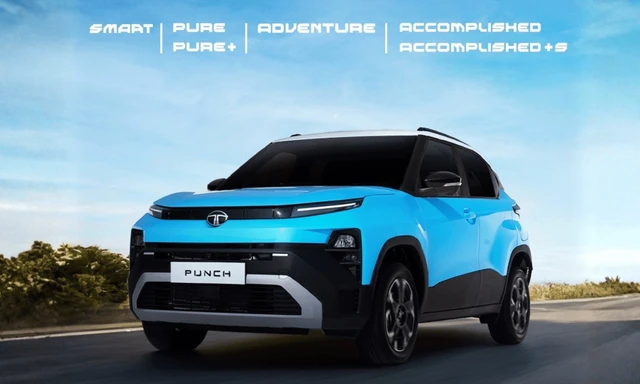Britain Faces Huge Costs To Avoid Power Shortages With Electric Car Plan

- Drivers can be persuaded to recharge them overnight
- New tech can help Britain manage consumption to meet the estimated rise
- The country would ban new petrol and diesel cars and vans from 2040
Britain must plough billions of pounds into new power plants, grid networks and electric vehicle charging points if it is to avoid local power shortages when a planned ban on new diesel and petrol cars begins. Supporting millions more battery-powered vehicles over the next two decades is technically feasible, and if drivers can be persuaded to recharge them overnight - when spare power capacity is abundant - the huge infrastructure cost could be kept down.
Also Read: Confederate Motors Goes All-Electric
Local networks particularly face problems, so the country will need a range of technologies for managing consumption to meet an estimated rise of up to 15 percent in overall demand and prevent spikes of up to 40 percent at peak times.
"It will be a challenge and a lot of investment is required - in generation capacity, strengthening the distribution grid and charging infrastructure," said Johannes Wetzel, energy markets analyst at Wood Mackenzie.
In July, the government said it would ban the sale of new petrol and diesel cars and vans from 2040. The aim is to reduce air pollution, a source of growing public health concerns, and help Britain to cut carbon emissions by 80 percent by 2050 from 1990 levels - the target it has set itself.
Also Read: MINI Showcases Electric Concept Car
Although some conventional cars will remain on the road, numbers of electric vehicles (EVs) could balloon to 20 million by 2040 from around 90,000 today, experts estimate. Charging them all will require additional electricity.
Britain already faces a power supply crunch in the early 2020s as old nuclear reactors come to the end of their lives and remaining coal-fired plants are phased out by 2025.
Four years ago, well before the conventional car ban was raised, the government said over 100 billion pounds ($130 billion) in investment would be needed to ensure clean, secure electricity supplies and to reduce demand.
That looks optimistic. The cost of Hinkley Point C alone, the only nuclear power station now under construction in Britain, is estimated at 19.6 billion pounds.
Gas plants are cheaper and faster to build but investment in new ones is flat, and they still produce carbon emissions. Renewable energy presents problems of matching supply and demand; solar panels for instance produce no power in the night when drivers would ideally recharge their electric cars.
OFF-PEAK INCENTIVES
Estimates vary on future numbers of electric vehicles, as well as hybrids and those powered by hydrogen fuel cells which do not require mains electricity. However, several analysts surveyed by Reuters said anything up to an extra 50 terrawatt hours (TWh) would be needed for them by 2040.
Bernstein analysts say overall demand could increase by 41-49 TWh, or 13-15 percent of current levels. However, a 15 percent rise would translate into a 40 percent jump in peak demand if drivers charged their cars between 6 and 9 pm, when electricity consumption is at its highest.
This problem can be eased by encouraging charging at night, when demand is currently only about a third of during peak periods. "We do not see the transition to EVs as posing a significant stress on peak demand if charging were incentivized to happen at off-peak times," they said.
Britain has made progress in energy efficiency. Overall and peak power demand fell by around 14 percent between 2005 and 2016, even though the economy grew by the same amount.
"There is definitely some slack in the transmission and distribution system to tolerate an increase in the peak demand," according to Bernstein.
Its "extreme scenario" projection of a 40 percent rise in peak demand equates to 24 gigawatts (GW). But National Grid, which operates the transmission system, has said the rise in peak demand can be kept to 5 GW if there is smart charging and time-of-use electricity tariffs.
Such encouragement of off-peak EV charging by making power cheaper than at peak times of the day will be essential.
"A very large peak demand could be the outcome if other things don't happen, such as smart grids, smart charging and energy storage, although we expect these technology solutions to be developed to support increasing power demand within sensible peak levels," said Richard Sarsfield-Hall, director at Poyry Management Consulting.
(Additional reporting by Susanna Twidale and Oleg Vukmanovic; Editing by Veronica Brown and David Stamp)
(This story has not been edited by NDTV staff and is auto-generated from a syndicated feed.)
Latest News
 Jaiveer Mehra | Jan 7, 2026Tata Harrier, Safari Petrol Launched In India: Prices Start From Rs 12.89 LakhBoth SUVs get the 1.5-litre Hyperion turbo-petrol engine from the Sierra in a higher state of tune.3 mins read
Jaiveer Mehra | Jan 7, 2026Tata Harrier, Safari Petrol Launched In India: Prices Start From Rs 12.89 LakhBoth SUVs get the 1.5-litre Hyperion turbo-petrol engine from the Sierra in a higher state of tune.3 mins read Carandbike Team | Jan 7, 2026Toyota Urban Cruiser EV India Debut On January 19Toyota’s entry EV is the sister model to the Maruti Suzuki e Vitara and shares the same underpinnings and tech.1 min read
Carandbike Team | Jan 7, 2026Toyota Urban Cruiser EV India Debut On January 19Toyota’s entry EV is the sister model to the Maruti Suzuki e Vitara and shares the same underpinnings and tech.1 min read car&bike Team | Jan 7, 2026Tata Punch Facelift Variants, Key Features RevealedThe Punch facelift will be offered in four familiar key trim levels and six variants.1 min read
car&bike Team | Jan 7, 2026Tata Punch Facelift Variants, Key Features RevealedThe Punch facelift will be offered in four familiar key trim levels and six variants.1 min read car&bike Team | Jan 7, 2026Skoda Kylaq Prices Hiked By Up To Rs 19,000Prices for the Kylaq subcompact SUV now start at Rs 7.59 lakh (ex-showroom).1 min read
car&bike Team | Jan 7, 2026Skoda Kylaq Prices Hiked By Up To Rs 19,000Prices for the Kylaq subcompact SUV now start at Rs 7.59 lakh (ex-showroom).1 min read Amaan Ahmed | Jan 7, 2026Ather 450X To Get Cruise Control; All 2025 Examples Will Receive Infinite Cruise Via OTA UpdateMore than 44,000 customers who bought the Ather 450X in 2025 will be eligible for the over-the-air update that will introduce 'Infinite Cruise'.1 min read
Amaan Ahmed | Jan 7, 2026Ather 450X To Get Cruise Control; All 2025 Examples Will Receive Infinite Cruise Via OTA UpdateMore than 44,000 customers who bought the Ather 450X in 2025 will be eligible for the over-the-air update that will introduce 'Infinite Cruise'.1 min read Jaiveer Mehra | Jan 7, 2026Afeela SUV Prototype Is Sony-Honda’s Next EVThe second model under the Sony-Honda joint venture to debut in production guise in 2028.1 min read
Jaiveer Mehra | Jan 7, 2026Afeela SUV Prototype Is Sony-Honda’s Next EVThe second model under the Sony-Honda joint venture to debut in production guise in 2028.1 min read
 Amaan Ahmed | Jan 3, 2026VLF Mobster 135 300 KM Review: Fun But FlawedA 125 cc scooter with Italian design and Chinese genes is a rare combination, and while some may be tempted to dismiss it because of its origins, the VLF Mobster shows 125s can also be exciting – but not without compromises.11 mins read
Amaan Ahmed | Jan 3, 2026VLF Mobster 135 300 KM Review: Fun But FlawedA 125 cc scooter with Italian design and Chinese genes is a rare combination, and while some may be tempted to dismiss it because of its origins, the VLF Mobster shows 125s can also be exciting – but not without compromises.11 mins read Preetam Bora | Dec 30, 2025TVS Orbiter Review: Real-World Performance and Range TestedThe TVS Orbiter is a promising electric scooter promising decent range, practicality and pricing. But is there any reason to avoid it? We spent a few days getting to know it better.9 mins read
Preetam Bora | Dec 30, 2025TVS Orbiter Review: Real-World Performance and Range TestedThe TVS Orbiter is a promising electric scooter promising decent range, practicality and pricing. But is there any reason to avoid it? We spent a few days getting to know it better.9 mins read Jafar Rizvi | Dec 24, 2025MG Windsor EV 38 kWh Long-Term Report: IntroductionThe Windsor EV has joined our garage, and before it settles into daily duty, I took it out to get a sense of what living with an electric car is like.4 mins read
Jafar Rizvi | Dec 24, 2025MG Windsor EV 38 kWh Long-Term Report: IntroductionThe Windsor EV has joined our garage, and before it settles into daily duty, I took it out to get a sense of what living with an electric car is like.4 mins read Seshan Vijayraghvan | Dec 23, 20252026 Kia Seltos Review: Formula Is Spot On, But Is The Timing Right?The 2nd-gen Kia Seltos has arrived, but it has the challenge of facing strong rivals like the Victoris and Sierra. The question is simple - Does it still have what it takes?9 mins read
Seshan Vijayraghvan | Dec 23, 20252026 Kia Seltos Review: Formula Is Spot On, But Is The Timing Right?The 2nd-gen Kia Seltos has arrived, but it has the challenge of facing strong rivals like the Victoris and Sierra. The question is simple - Does it still have what it takes?9 mins read car&bike Team | Dec 26, 2025Tata Punch EV Long-Term Second Report: Highway Performance, Pros & ConsAfter a week of living with the Tata Punch EV Long Range—including a proper Mumbai-Nashik highway test—we've learned what this little electric SUV is really made of.1 min read
car&bike Team | Dec 26, 2025Tata Punch EV Long-Term Second Report: Highway Performance, Pros & ConsAfter a week of living with the Tata Punch EV Long Range—including a proper Mumbai-Nashik highway test—we've learned what this little electric SUV is really made of.1 min read






















































































































